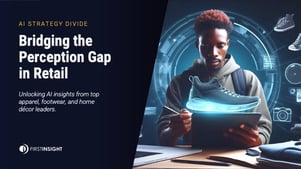Introduction
Businesses and consumers make price/performance decisions every day. Though we think of fashion as frivolous, price/performance decisions are made even there—in a fashion. Three years ago ruffles were the rage and casual dressing in business was accepted. But now these trends are out of favor. Understanding the tips and tails of trends is a huge challenge in many industries. And, unlike fashion, some trends don’t turn on a dime: for instance, migrating an auto line to hybrid production or ripping out coach seats for a larger business class section on a fleet of international planes.
Want eco-friendly dishwashers or toilets? Enduring features matter and are less risky for retailers to stock, but issues persist in knowing when to retire ‘version 1’ or launch the next generation of eco-friendly products. There are a variety of methods that are applied in pricing and merchandising systems to help address these issues. Note: Pricing and merchandising are huge topics and we won’t cover everything in this short article. But let’s take a look at approaches that work.
Let the Games Begin
A new approach in demand management to address trends and pricing uses gaming techniques to assist product companies and retailers in determining what products to invest in, when to launch, and at what price. Traditionally, this has been a huge data management exercise: collecting prior sales data, competitive pricing (if it exists), and other market data about current buyers, then running various scenarios involving features, attributes, pricing, and history by sales channel, customer segments, etc. And that can be useful. But when it comes to the ever-evolving consumer product markets, history may be no indication of future performance.
This new approach—leveraging game technology—gets the consumer in the act. Consumers are asked about products, features and price. I have played the game, hoping for the red tote bag at the right price. And I like the idea of providing direct feedback to the product company. (I did notice an increase in red totes and handbags this year, so maybe they are listening to us.)
The key to using this approach well is creating motivation for customers and also making the back-end data actionable—that is feeding the demand and product investment cycle. One company that developed gamification and successfully developed a merchandising and pricing solution is First Insight.
Interestingly, companies such as Vera Bradley, David’s Bridal and The Limited, that have used this technique report significant improvement in performance. Said Rob Wallstrom, President of Saks Fifth Avenue Off 5th, “The First Insight solution is helping us predict how new products will perform. Insight enables us to allocate our inventory by applying useful consumer-sourced information to offer our customers the best product available.” The words Mr. Wallstrom chose—“consumer-sourced information”—are the key. Fresh insights from the consumer rather than stale data.
It’s a great idea to engage consumers directly to indicate style and price point, but can it scale? First Insight mentioned that one of their customers, a fast fashion retailer, must make rapid decisions about the next line of designs to produce and bring to market each month. The time frame for decision making is very narrow, often shorter than 10 days from the time designers present their designs to buying. This fast fashion retailer is able to test 90% of their new product assortment every month, providing actionable data in advance of the buying decisions.
Let’s be clear—this approach is not markdown optimization—but initial ticket price modeled with input from the consumer—thus first insight.
Managing the Process of Pricing
Pricing is a complex exercise that traverses the whole enterprise. Early-stage decisions about the attractiveness of markets, products, and their features and attributes; and product launches including advertising, packing, promoting and, at times, optimizing mark downs, should be managed in a cohesive way. JDA is a long-term player at this, and with their acquisition of i2 they can provide the process power across the enterprise from the product planning phase through to promotion.
One of the powerful capabilities that JDA also has (and will continue to develop) is the link to the advertising side of the business. This ensures that the right products and their prices and special promotions are successfully transferred into ads. Many people do not realize how many misfires occur in promotions due to errors. We need to get the right price on the web, in print, etc. More importantly, in today’s consumer scan-based world, the integration back to the database to analyze pricing and promotion success is an invaluable information asset. (You can learn more about this at the Retail Technology event we are hosting with MIT this month.)
Ultimately, pricing should be thought about as a cross-functional set of activities from:
- Product inception, market discovery (Is there a market at a profit?)
- Finance—is the thinking sound around product and profits?
- Marketing—understanding customers by segments, offerings, and prices.
- Sales and deal management—creating the right deal for each partner.
- Supply chain optimization—supply chain from the early stage, including helping to determine the product cost, managing the process to market, and continuing to ensure profit contribution till end-of-life.
- Sales and Operations Planning—this is truly a cross-functional discussion and should be fed actionable data for consensus-based decision making.
- Supplier collaboration—working with suppliers is, I hope, a cross-functional activity, from product conceptualization until end-of-life.
- Channel partners—distributors, retailers, ecommerce providers who may know the customer better. However, brand companies need to create win/win terms to ensure pricing policies that are profitable to both parties.
Price over the Lifetime of the Product
If we see pricing as a process, we realize how important it is to understand how pricing changes over time and as product moves from partner to partner. Evaluating the success of pricing for each market at each phase of the product lifecycle is critical. It can mean the difference between extracting margin or losing all the profits unnecessarily. JustEnough’s Pricing and Markdown Planning has an important module for just such a purpose. It provides a complete view of current inventory and has multiple markdown structures over variable durations for each product. These can be set across the life of the product through to the phase-out date.
This is an important combination—having a planning tool for the future, and also having current inventory levels so that users can adjust plans based on reality. There are many requirements for evaluating the current state of products and how they are performing in the market. Various factors affect strategy: end-of-lifing or seasonal merchandise changes which necessitate that retailers make room for new merchandise (and may require deep discounts) vs. hot products that have only a few left (and customers are still willing to pay full price). These and other nuances can now be understood and managed.
Catching the Nuances and Those Precious Golden Crumbs
By jumping prematurely into markdowns or ‘mass slashing,’ retailers can lose that precious margin when it might not be required. More precise price adjusting (markdowns, promoting, bundling, and moving merchandise to another location where it might still retain its full retail price) is becoming more of a practice in retail these days, now that brand and retail companies have had a few years of experience in using analytics tools. Big number-crunching analysis across the chain is still the most frequent process, but it misses the nuances of specific products and also misses the ability to keep calling shoppers into the store more frequently for the ‘bigger and better sales on select merchandise.’
Vistaar, a solution provider focused solely on pricing for B2C and B2B markets, has a rich optimization solution that looks across the process, as we are recommending, and also offers various statistical analytics to support decision making. They also offer Vistaar-as-a-Service, which provides not only that SaaS model many companies are looking for, but also the ongoing training required for implementation and for the long haul, since ongoing learning is inherent in managing pricing.
Investing in Pricing
In spite of the importance of pricing, the adoption of pricing systems is still in its infancy. Ultimately, organizations will have to think about pricing as a process that is highly integrated across the enterprise. Just as we have embraced process methods of thinking in Customer Experience, Supply Chain, and Quality, pricing management may ultimately go that way. Although that might seem daunting, the most important point is to get started and demonstrate results.
Remember, companies often plan revenue and profits during product planning, based on the planned or average market price—not what they might wind up getting after discounts, promotions, allowances, and trade promotional deals erode or destroy their price. So applying a systematic approach can create substantial savings and enhance your company’s knowledge of your customers, segments and channel partners. Often companies can actually increase prices. First Insight told us about one of their customers who set their initial ticket price a whole ten dollars more than they were originally thinking, which was successful in the market. On a fifty dollar item, an increase in ten dollars per unit is truly significant. (Many more examples exist.)
We are so conditioned to markdowns and closing the deal that we lose focus on what the customer ultimately values.
Considerable savings have been demonstrated by all the solution providers mentioned above. Here are examples of what users can expect to achieve:
- Sustaining full retail price over time, leading to better profitability
- Analytics for segmented pricing and achieving better margins by segmentation
- Increased price/revenue within product families based on features and attributes
- Brand segmented revenue increases—often a manufacturer can offer several brands or specific products by channel. Doing this intelligently can significantly increase revenues.2
- More successful deal management—getting a win/win between manufacturing and the channel
- Fine-tuning the markdown optimization process and preserving margin
- And of course, picking the right price for the right offering from the get-go
So investing in pricing is commitment. Organizations have a lot to learn and a lot to gain. We recommend that firms that have not systematically approached pricing think about their first projects more as pilots, where the goal is, over a year, to implement some important capabilities with the aim of harvesting knowledge. From that vantage point, they can plan the next phases with more tangle goals. Many of our customers who were a bit more patient in the beginning, but committed over multiple years, found significant and growing results from year to year (including tangible results in the first year, though that was less of a goal).
No matter how aggressively you seek to pursue pricing projects with early bottom-line goals, expect to be in learning mode. Some big surprises about some long-held ideas about your markets, customers, product and partners await you.
















